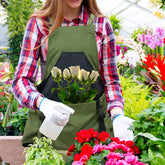What to Use for Shade Cloth in Your Garden
Table of Contents
- Introduction
- What is Shade Cloth?
- Benefits of Using Shade Cloth
- Types of Shade Cloth and Their Densities
- How to Select the Right Shade Cloth for Your Plants
- Installation Tips
- Maintenance and Care for Shade Cloth
- Conclusion
Introduction
Nothing is quite as rewarding as watching your garden thrive under the sun. However, as the temperature rises, so does the risk of heat stress for our beloved plants. Did you know that intense sunlight can inhibit growth, leading to reduced crop yields and even plant death? As gardeners, we face the dual challenge of providing our plants with sufficient light while protecting them from the harsh effects of excessive sun. This is where shade cloth comes into play.
At Garden Greenland, we are passionate about redefining the home gardening experience. We believe everyone deserves to feel connected to nature, and our premium gardening products are designed to help you embrace your green thumb. In this post, we will explore what shade cloth is, its benefits, and how to choose the right one for your garden. By the end, you'll have a comprehensive understanding of how shade cloth can enhance your gardening efforts and support your plants' growth.
We will cover the following topics:
- What is shade cloth?
- Benefits of using shade cloth
- Types of shade cloth and their densities
- How to select the right shade cloth for your plants
- Installation tips
- Maintenance and care for shade cloth
- A conclusion that ties everything together
So, let’s dig in and explore the world of shade cloth!
What is Shade Cloth?
Shade cloth is a specially designed fabric used to reduce the amount of sunlight that reaches plants. It is typically made from woven or knitted materials that allow for varying degrees of light filtration while providing essential protection from harsh sunlight. Shade cloth can be used in various gardening setups, including greenhouses, hoop houses, and outdoor gardens.
While many of us may have used makeshift materials like old sheets or burlap to shield our plants, investing in quality shade cloth can significantly improve results. Available in various densities and colors, shade cloth allows gardeners to customize the level of sunlight exposure based on the specific needs of their plants.
Benefits of Using Shade Cloth
The benefits of using shade cloth in your garden are numerous, making it an essential tool for any gardener looking to maximize their success. Here are some key advantages:
1. Solar Radiation Protection
Excessive sunlight can lead to sunburn and leaf scorch in plants, causing irreversible damage. Shade cloth acts as a protective barrier, filtering harmful UV rays and preventing heat stress. This protection is particularly crucial for delicate plants that are susceptible to sunburn, such as seedlings and young transplants.
2. Enhanced Photosynthesis
Interestingly, while plants thrive on sunlight, too much of it can hinder their growth. Shade cloth allows for optimal light penetration, enabling plants to photosynthesize effectively without experiencing heat stress. This balance can lead to improved growth and higher yields in your garden.
3. Pest and Animal Protection
In addition to shielding plants from sunlight, shade cloth can also act as a barrier against pests and animals. Depending on the fabric's weave density, it can deter insects while allowing beneficial pollinators to access your plants. This added layer of protection can lead to healthier plants and a more bountiful harvest.
4. Moisture Retention
Shade cloth can help maintain soil moisture levels by reducing evaporation. This is especially beneficial during hot summer months when water conservation is crucial. By keeping the soil cooler and more hydrated, shade cloth supports the health of your plants and reduces the frequency of watering.
5. Extended Growing Season
Using shade cloth can help extend your growing season, allowing you to cultivate a wider variety of plants. By mitigating the effects of extreme heat, shade cloth enables gardeners to grow heat-sensitive crops during warmer months without the risk of damage.
Types of Shade Cloth and Their Densities
When selecting shade cloth for your garden, understanding the various types of materials and densities is essential. The effectiveness of shade cloth is primarily determined by its density, which indicates how much sunlight it blocks. Here’s a breakdown of the types of shade cloth and their respective densities:
1. Woven Shade Cloth
Woven shade cloth is made from tightly woven polypropylene fibers. This type of shade cloth provides excellent UV protection and is durable, making it suitable for long-term use. However, it is essential to note that woven shade cloth may unravel if cut, so care must be taken during installation.
2. Knitted Shade Cloth
Knitted shade cloth consists of loosely knitted polyethylene threads, which allow for better air circulation and light diffusion. This type of shade cloth can be easily cut to size without fraying, making it a popular choice among gardeners. Knitted shade cloth is lightweight and easy to handle, making installation a breeze.
3. Density Levels
Shade cloth is available in various densities, typically ranging from 10% to 90%. Here’s a quick guide to help you determine which density is appropriate for your plants:
- 10%-30% Density: Ideal for plants that thrive in full sun, such as tomatoes and peppers. This density allows for maximum light exposure while providing a small amount of protection against extreme heat.
- 40%-60% Density: Suitable for a wide range of vegetables and ornamental plants. This density strikes a balance between sunlight exposure and shade, making it a versatile choice for many gardens.
- 70%-90% Density: Best for shade-loving plants, such as ferns and orchids. This level of shade is perfect for preventing sunburn and keeping delicate plants cool.
4. Color Considerations
Shade cloth also comes in various colors, which can influence its effectiveness. Generally, lighter-colored cloths reflect heat and light, making them ideal for hot climates, while darker cloths absorb heat, which can help retain warmth in cooler regions. Consider your local climate and the specific needs of your plants when choosing the color of your shade cloth.
How to Select the Right Shade Cloth for Your Plants
Choosing the right shade cloth for your garden requires careful consideration of several factors. Here’s a step-by-step approach to selecting the best option for your plants:
1. Assess Your Plants' Needs
Begin by evaluating the light requirements of the plants you intend to grow. Research their optimal sunlight exposure, and use this information to guide your choice of shade cloth density. Consider grouping plants with similar light needs together for efficient shading.
2. Evaluate Your Climate
Your local climate plays a crucial role in determining the type of shade cloth you should use. In hotter regions, a higher density or lighter-colored shade cloth may be necessary to protect plants from heat stress. Conversely, in cooler areas, a lower-density or darker cloth may help retain warmth.
3. Consider Your Garden Setup
Think about the structure you will be using to support your shade cloth. Will it be a greenhouse, a hoop house, or an outdoor garden? Ensure that the shade cloth you select is compatible with your setup and can be securely fastened.
4. Budget and Quality
While it’s tempting to opt for the cheapest option, investing in high-quality shade cloth can provide better long-term results. Evaluate your budget while considering the durability and effectiveness of the shade cloth options available.
Installation Tips
Once you’ve selected the right shade cloth, it’s time to install it properly. Here are some helpful tips for effective installation:
1. Measure and Cut
Start by measuring the area you intend to cover. Be sure to leave some excess material for secure attachment. Cut the shade cloth to the appropriate size, taking care not to damage the fabric.
2. Use Appropriate Fasteners
Secure the shade cloth using clips, springs, or ties that are compatible with your garden structure. Ensure that the cloth is taut and evenly distributed to prevent sagging or flapping in the wind.
3. Allow for Airflow
When installing shade cloth, it's crucial to ensure that there is adequate airflow beneath it. This can help prevent heat buildup and promote healthier plant growth. Avoid laying the cloth directly on the plants; instead, use supports to lift it above the garden.
4. Seasonal Adjustments
As the seasons change, you may need to adjust your shade cloth setup. Consider removing or repositioning the shade cloth during periods of cooler weather to maximize sunlight exposure for your plants.
Maintenance and Care for Shade Cloth
To ensure the longevity of your shade cloth, proper maintenance is essential. Here are some tips for caring for your shade cloth:
1. Regular Inspection
Periodically check your shade cloth for signs of wear or damage. Look for frayed edges, tears, or areas where the fabric may be sagging. Address any issues promptly to prevent further damage.
2. Clean as Needed
Dust and debris can accumulate on shade cloth, reducing its effectiveness. Gently clean the fabric with a soft brush or hose, taking care not to damage the material. Allow it to air dry completely before reattaching it.
3. Seasonal Storage
When not in use, store your shade cloth in a cool, dry place to protect it from UV damage. Folding it neatly and keeping it in a storage bag can help extend its lifespan.
Conclusion
Shade cloth is an invaluable tool for gardeners looking to protect their plants from excessive sunlight and heat. By understanding the types, densities, and benefits of shade cloth, we can make informed choices that enhance our gardening efforts.
At Garden Greenland, we believe that every gardener deserves the tools and knowledge to succeed. With high-quality shade cloth and proper installation, we can help our plants thrive even in the most challenging conditions.
As you consider your gardening needs, remember to explore our wide range of gardening essentials. From Garden Tools to Garden Equipment, we are dedicated to providing you with exceptional products that enhance your connection to nature.
FAQ
1. What type of shade cloth should I use for my vegetable garden?
For most vegetable gardens, a shade cloth with a density of 30% to 60% is ideal. This range allows sufficient light for photosynthesis while protecting plants from excessive heat.
2. Can I use old sheets or burlap as shade cloth?
While old sheets and burlap can provide some shade, investing in high-quality shade cloth specifically designed for gardening is recommended for better light filtration and durability.
3. How do I determine the right color of shade cloth for my climate?
In hot climates, lighter-colored shade cloth reflects heat and light, making it more effective. In cooler regions, darker cloth can help retain warmth. Choose based on your climate and the needs of your plants.
4. How long does shade cloth last?
With proper care and maintenance, shade cloth can last several years. Regular inspections and cleaning can help extend its lifespan.
5. Do I need to remove shade cloth during the winter?
This depends on your local climate and the plants you are growing. In general, consider removing shade cloth during cooler months to allow maximum sunlight exposure unless you have sensitive plants that require protection.
By understanding the importance of shade cloth and how to effectively use it, we can create thriving gardens that connect us to the beauty of nature. Together, let’s nurture our plants and enjoy the fruits of our labor!









